MACRO OCTOBER IN MARLERA - Episode Seventeen -29 OF OCTOBER 2023, BEFORE THE RAIN
It was a gloomy day, the layer of clouds was thick up there in the sky, but the weather was surprisingly warm. I mean, I wasn't surprised back then on the 29 of October becouse that's quite normal in that period, but it was definitively much warmer than the following photographs may suggest.
So, since this is another episode of the MACRO OCTOBER IN MARLERA series, it means that all the stuff you'll see here today was photographed in Marlera, the coastal area situated a couple of kilometers from the village of Liznjan and about five or six kilometers from where I live. Have a good viewing.
In this wide shot, you can take a look at the setting and the overall atmosphere. I came across a nice variety of plants and small arthropods while walking u & down the gravel road that leads through the center of this two-dimensional picture and the center of Marlera in the three-dimensional reality, as well.
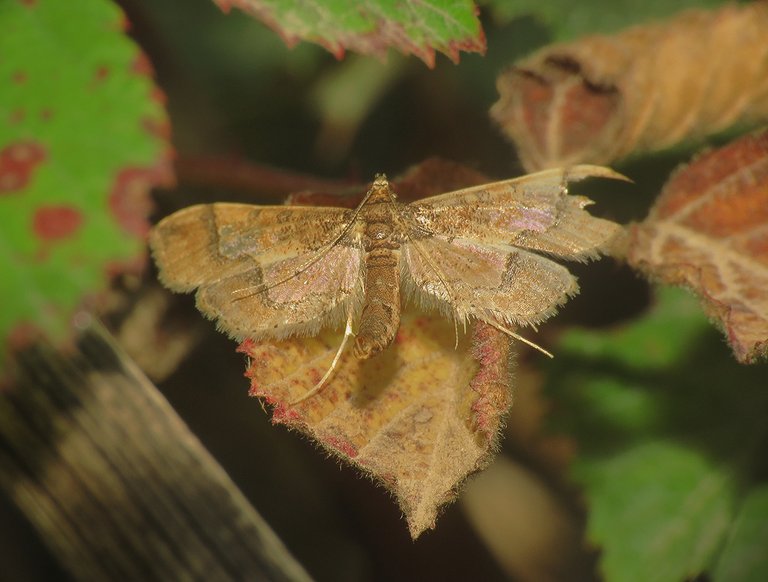
This is the Hydriris ornatalis ...
... a moth from the Crambidae family. The moth was resting on one of the very few brown leaves of the lush, green blackberry shrub by the side of the road.
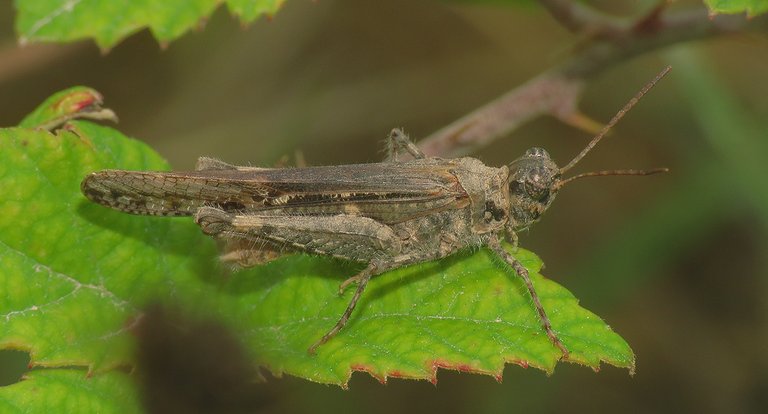
On one of the green leaves of the same shrub, I found this grasshopper from the Acrididae family.
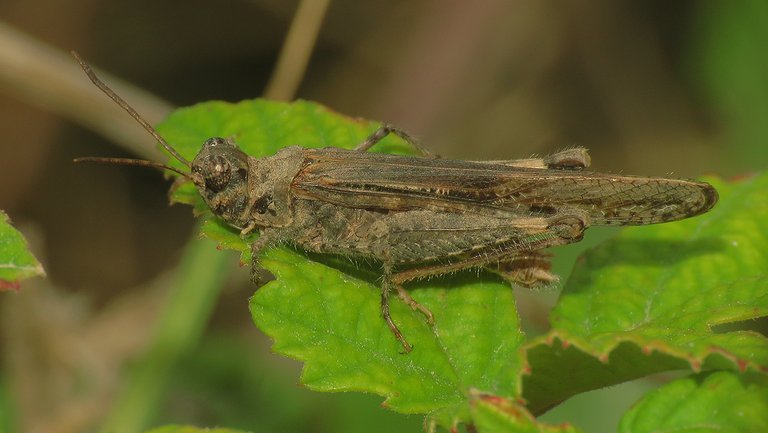
The name of the species is Acrotylus insubricus.
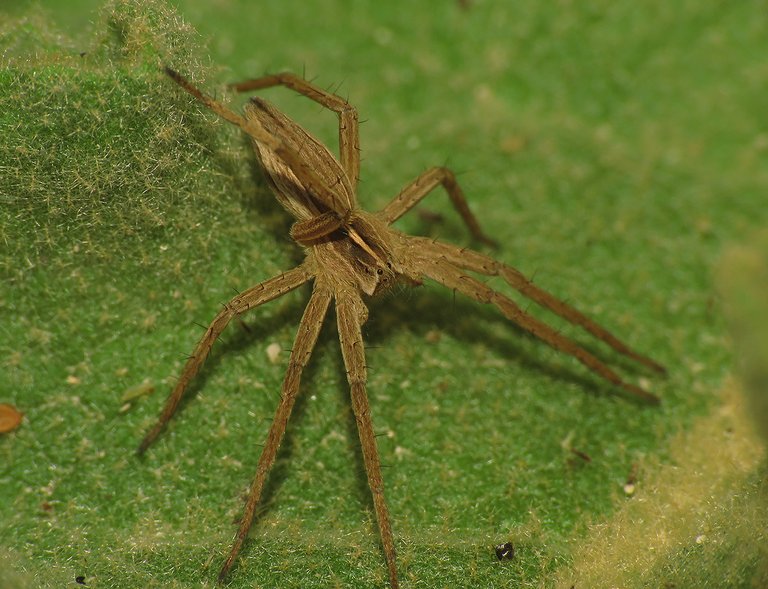
This Pisaura mirabilis ...
... a spider from the Pisauridae family was resting in its typical pose ...

... on one of the juicy leaves near the center of the large rosette formed by the Verbascum undulatum plant.
Another spider of the same kind ...
... was resting near the outer edge of the same circle of leaves.
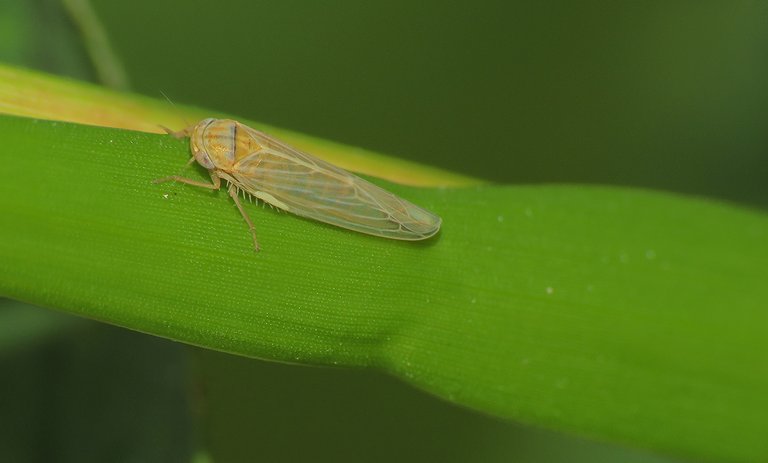
This Balclutha frontalis, a leafhopper from the Cicadellidae family ...
... was photographed on tall green grass that was growing (I mean, it still probably grows) about twenty or thirty meters further by the side of the same road.
In the following photograph ...
... the leafhopper is cleaning its wings.
Here you can take another look at the road that serves as some kind of narrative backbone of this post. The wide shot also provides a good opportunity to take a short break from the macro view.
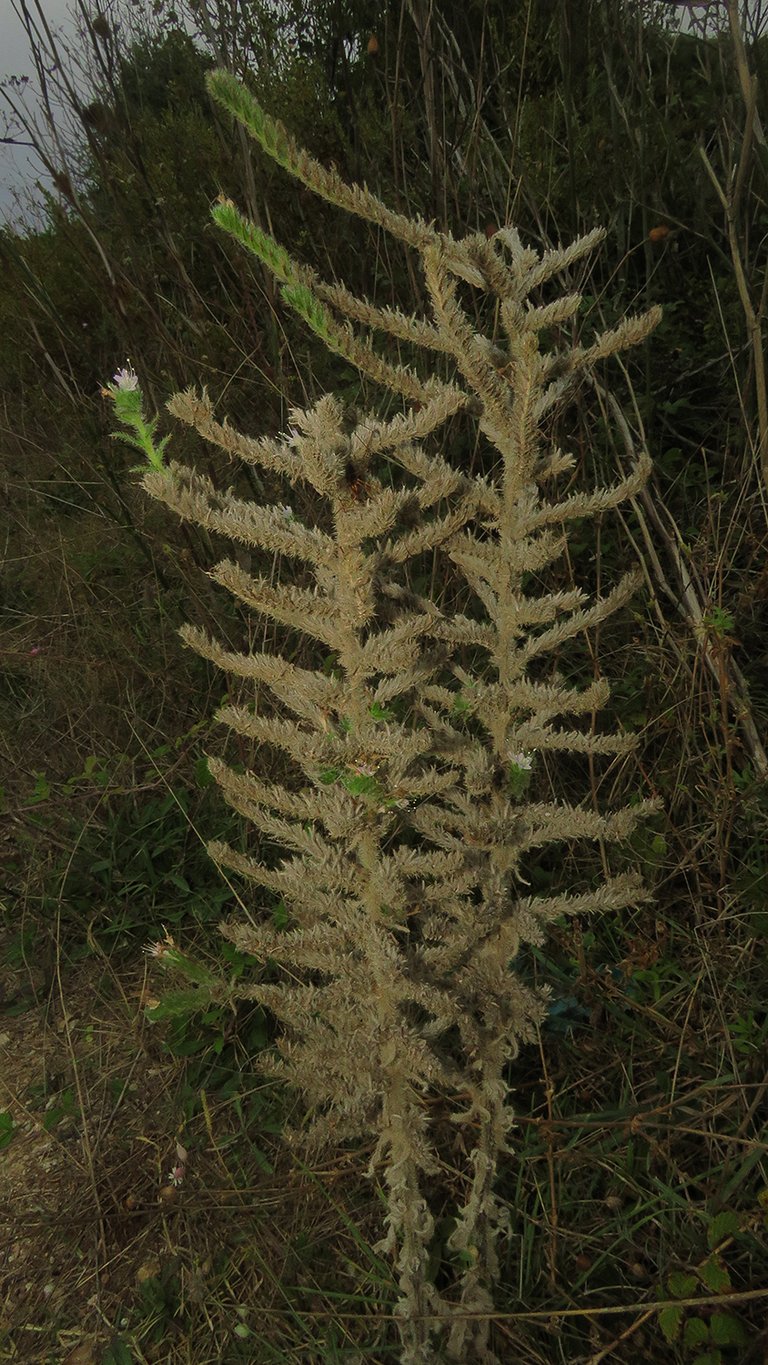
At one point, I came across this interesting Echium italicum plant. While all the other plants of that same kind I saw in those days in Marlere were completely dry ...
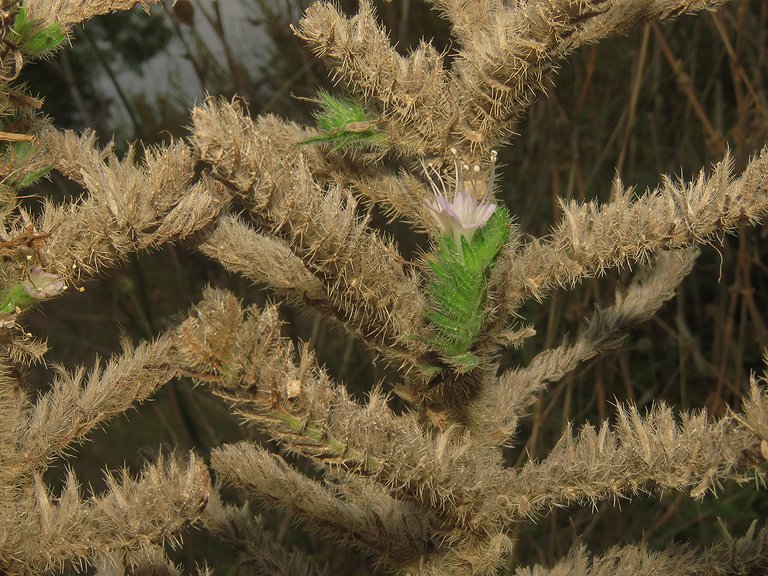
... this one still had a couple of flowers on it.
Those fresh details surrounded by dry tissue definitively looked cool in photographs. Contrasts always create a sense of story, of something that a photograph has to say, no matter how vague and elusive it could be.
I also found this long-legged arachnid there, on the same Echium italicum plant.
It's a harvestman. The Phalangium opilio ...
... commonly known as the common or brown harvestman. Daddy Longlegs is also one of the English common names I found on the Internet, but I'm pretty sure that name applies to some long-legged spiders as well.
The small Echium italicum flowers surrounded by all those hairs, or trichomes, more precisely - that's what the hairs on plants are called, look great when seen through the macro lens.
Here you can see a bunch of pale, yellowish blackberry leaves among the usual green ones. The scientific name of the blackberry shrubs that grow in Marlera is Rubus ulmifolius. On one side the road was bordered by a relatively tall green wall made of various shrubs, while on the other side ...
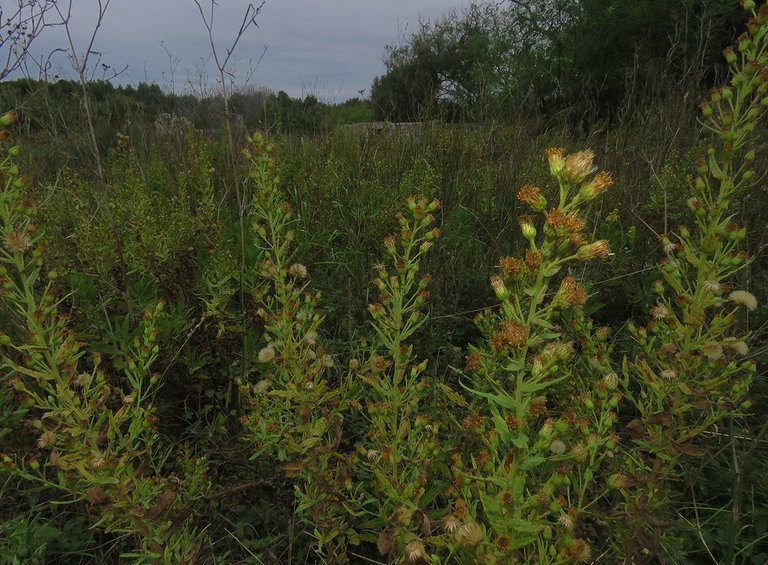
... there was a stretch of terrain covered prevalently with Dittrichia viscosa, a plant that appeared in quite a few previous episodes of this series.
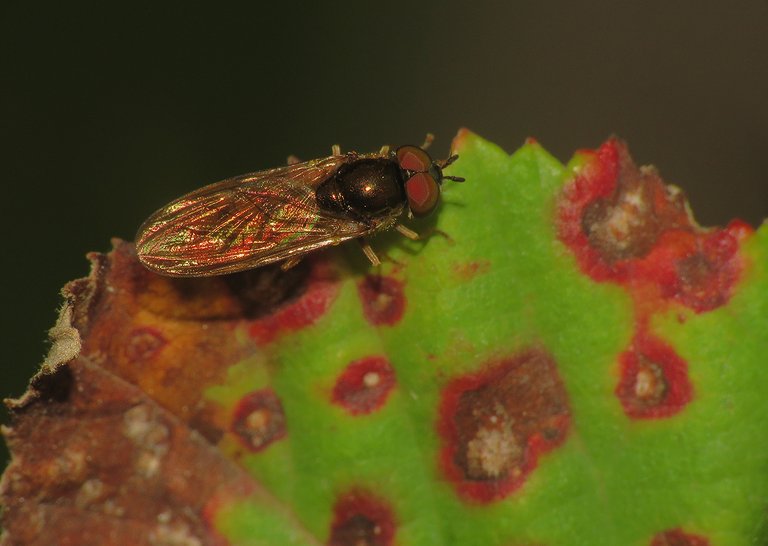
Some of the Rubus ulmifolius leaves were nicely "decorated" with red dots and circles provided by the microscopic fungus scientifically known as Sphaerulina westendorpii. On one of those colorful leaves, I photographed this fly from the Syrphidae family. The name of the species is Melanostoma scalare.
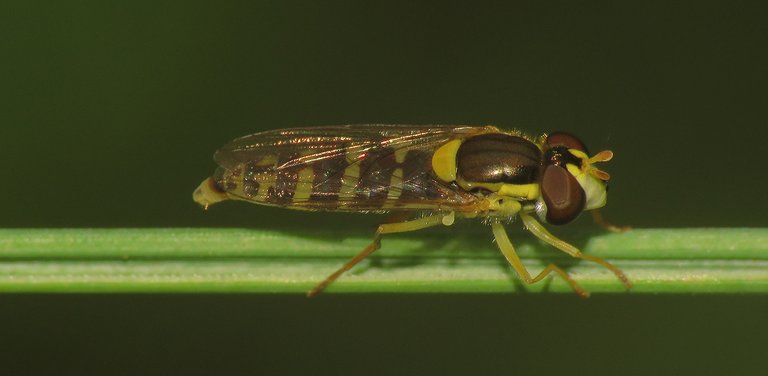
This Sphaerophoria interrupta, another species from the Syrphidae family ...
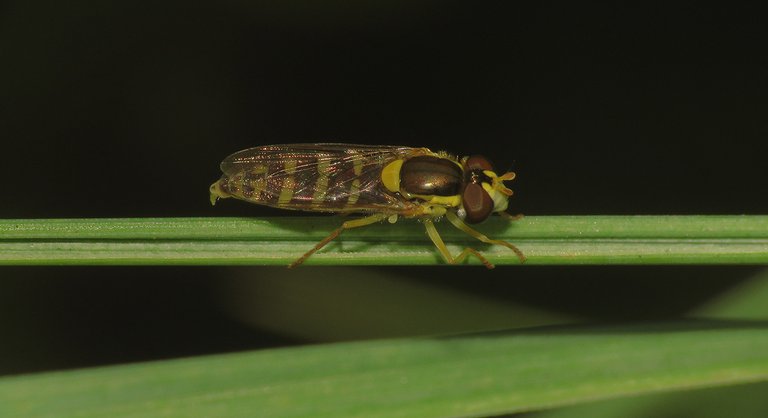
... was resting on the nearby grass.
A bit later, on another blackberry shrub, I found the Helophilus trivittatus, the third and last Syrphid fly of today's episode.
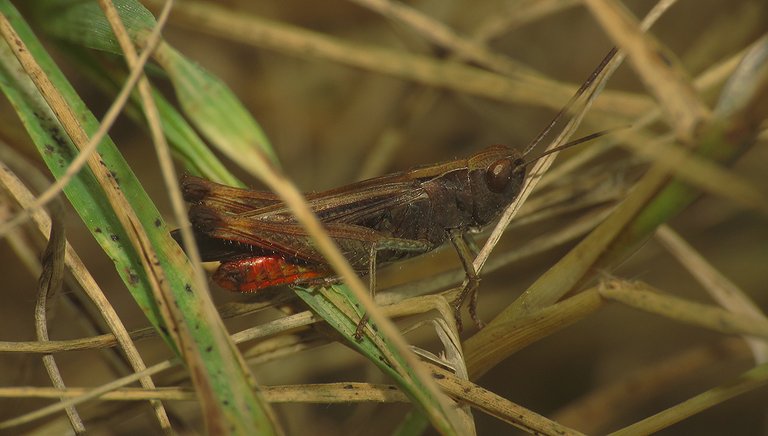
In the grass under the shrub ...
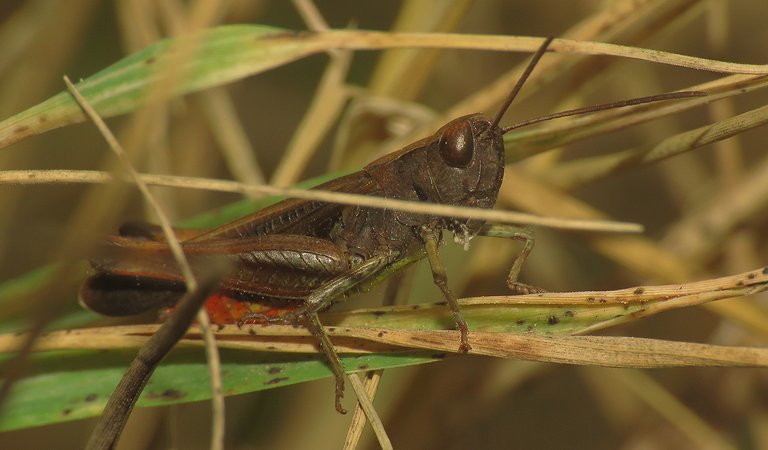
... I photographed the Chorthippus brunneus grasshopper. This is a Chorthippus brunneus male. If you are a die-hard fan of this series, if you saw each detail of each episode, and therefore remember seeing a Chorthippus brunneus grasshopper that doesn't look like the one shown in this and the previous photograph, that's becouse the color is very variable in this species.
This small, juvenile Hogna radiata spider was crossing the road when I caught him in these three photographs.
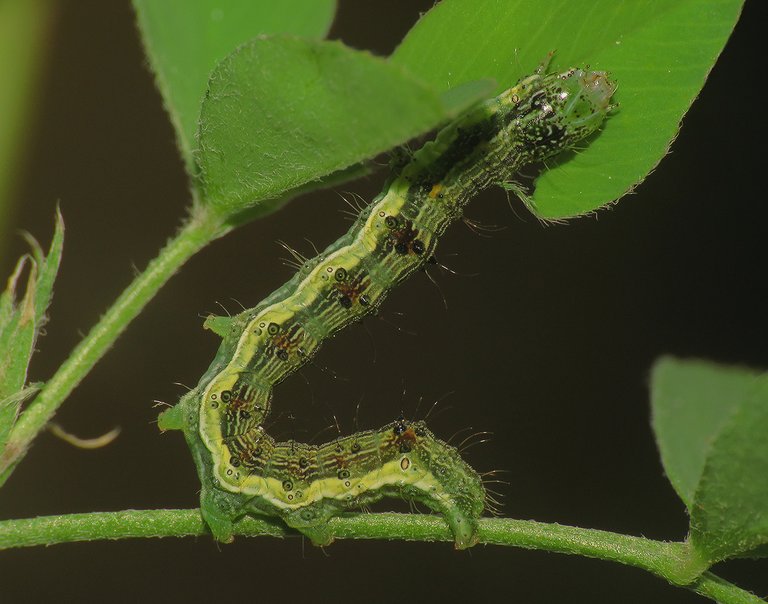
Here you can see a moth caterpillar feeding on the leaves of a plant from the genus Medicago of the Fabaceae family.
Since I forgot to take a clear photograph of the leaves, seeds, or flowers of the plant back on the 29 of October, I wasn't able to identify the exact species today while writing this post.
In this shot, you can see the same scene but the background is slightly different. When it comes to the caterpillar, this is the larval stage of the Helicoverpa armigera, a moth from the Noctuidae family. Helicoverpa armigera appeared at least a couple of times in this series but always as a caterpillar. I haven't seen any adult moth this year.
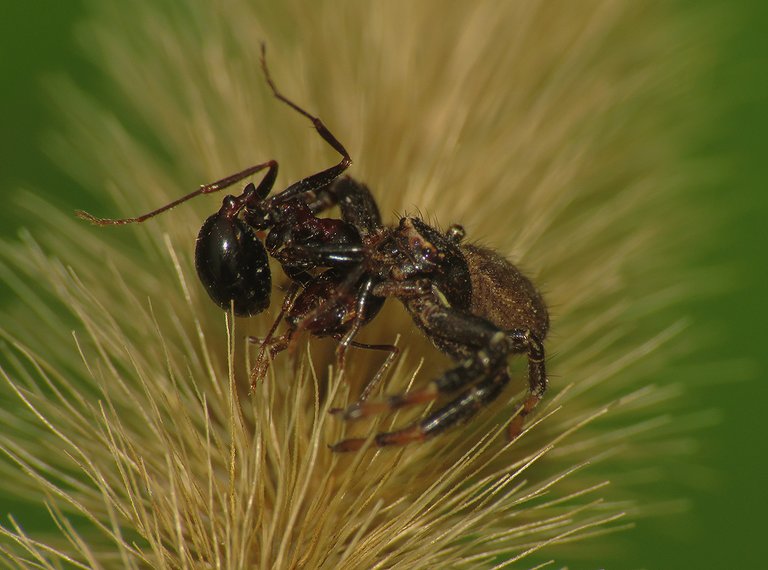
Here you can see a crab spider with its prey.
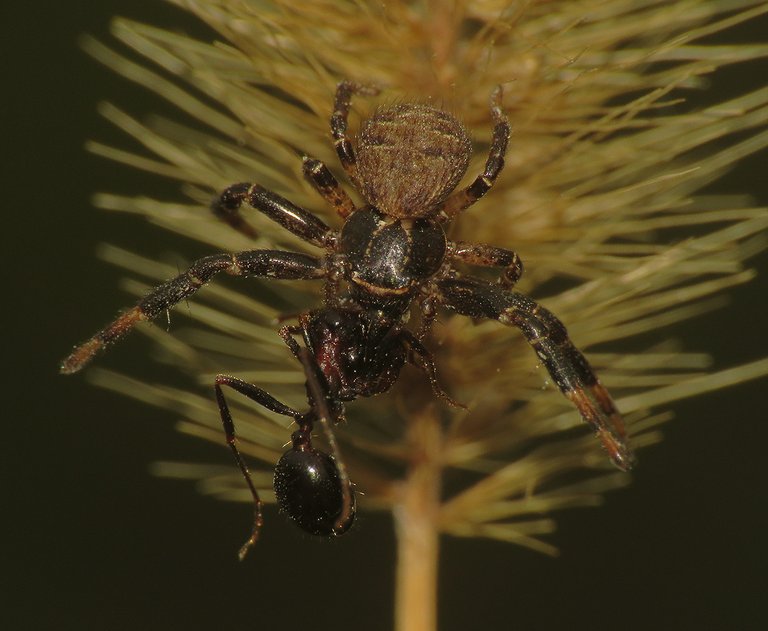
Xysticus kempeleni, a spider from the Thomisidae family has caught an ant. A Messor wasmanni worker. With the following photograph ...
... we have reached the end of the road. I mean, figuratively. The road goes on in reality but the post must end here becouse I don't have anything else to show.
HOPE YOU ENJOYED THE JOURNEY. AS ALWAYS HERE ON HIVE, THE PHOTOGRAPHS ARE MY WORK - THE END.
The following links will take you to the sites with more information about some of the protagonists of this post. I found some stuff about them there.
https://en.wikipedia.org/wiki/Hydriris_ornatalis
https://en.wikipedia.org/wiki/Acrotylus_insubricus
https://en.wikipedia.org/wiki/Pisaura_mirabilis
https://truehopperswp.com/public/species/balclutha-frontalis
https://en.wikipedia.org/wiki/Echium_italicum
https://en.wikipedia.org/wiki/Phalangium_opilio
https://en.wikipedia.org/wiki/Rubus_ulmifolius
https://en.wikipedia.org/wiki/Melanostoma_scalare
https://pnwhandbooks.org/node/2296/print
https://www.gbif.org/species/1536614
https://en.wikipedia.org/wiki/Helophilus_trivittatus
https://en.wikipedia.org/wiki/Chorthippus_brunneus
https://en.wikipedia.org/wiki/Hogna_radiata
https://en.wikipedia.org/wiki/Helicoverpa_armigera
https://www.gbif.org/species/2165253
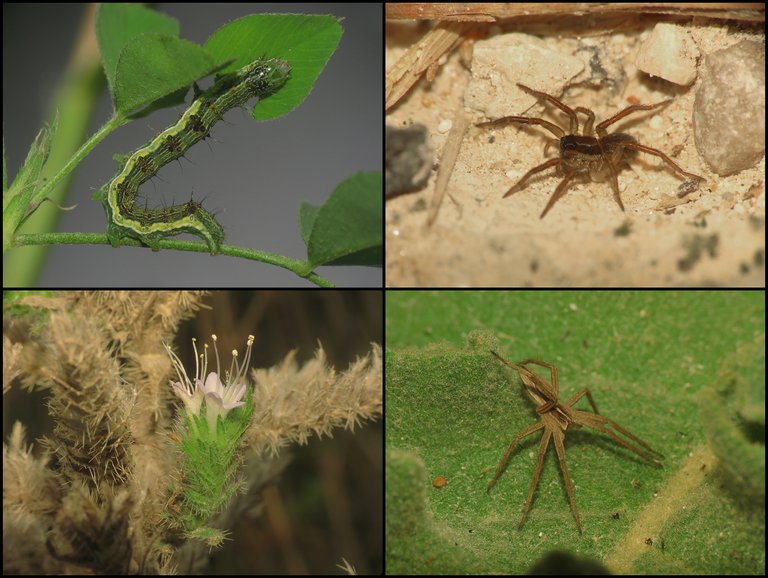

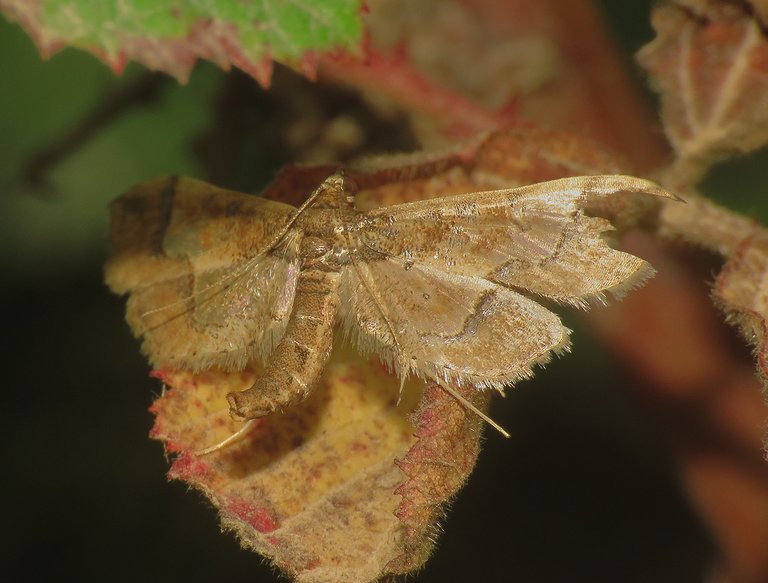
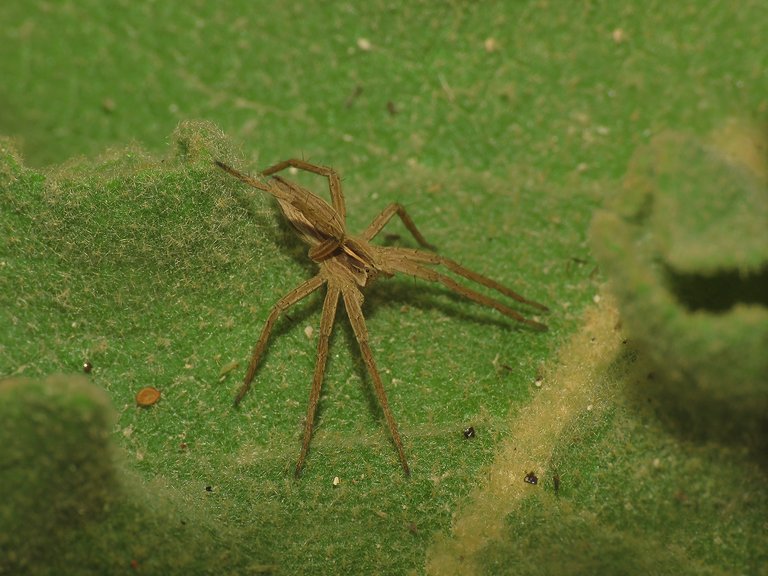
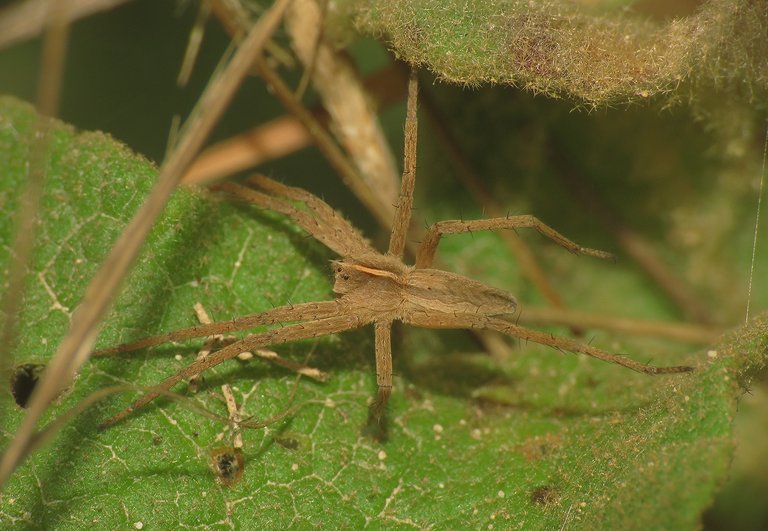
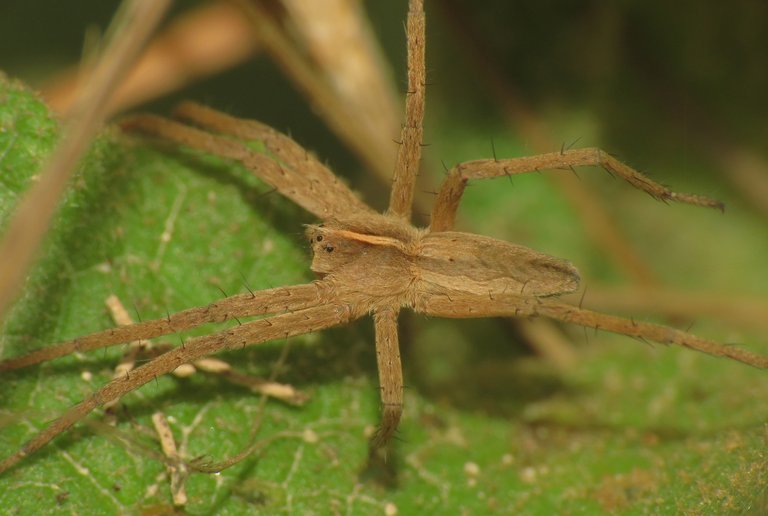

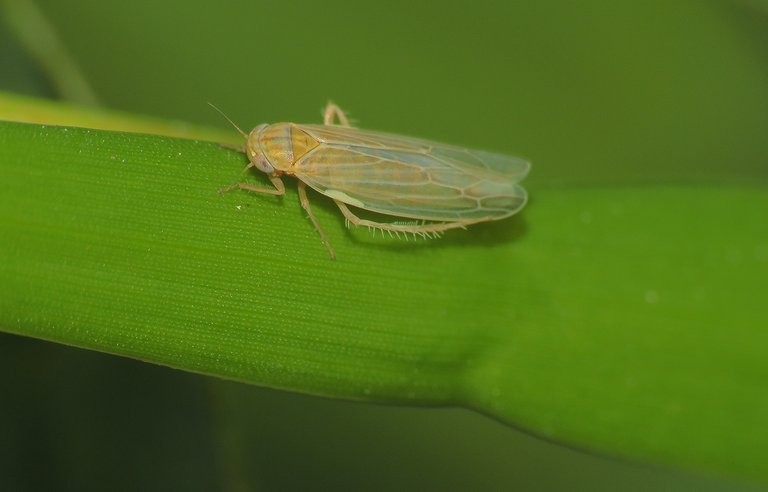
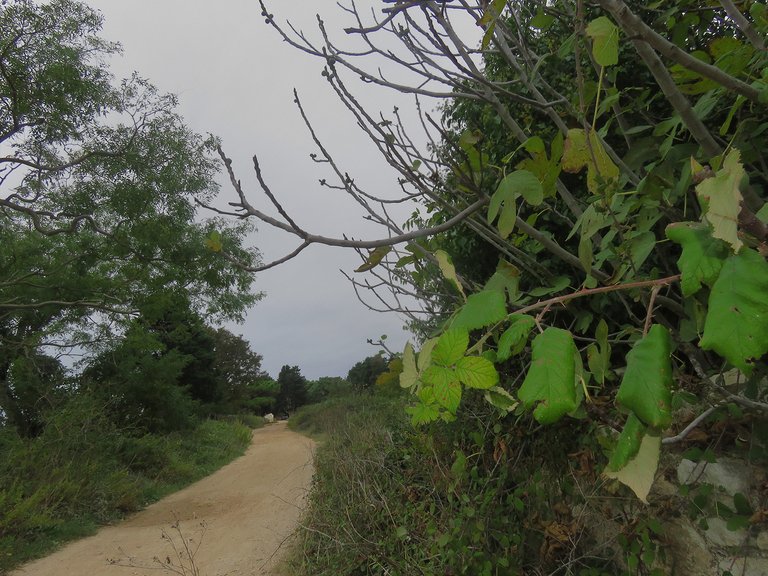


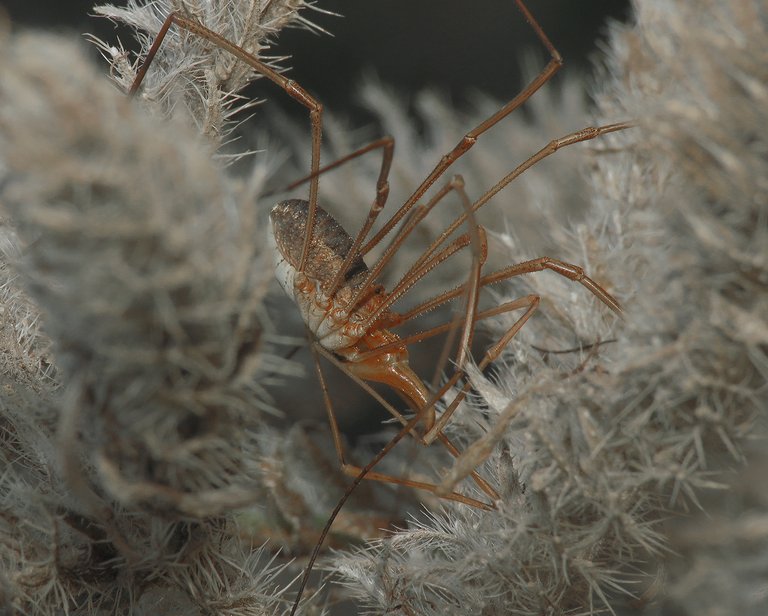

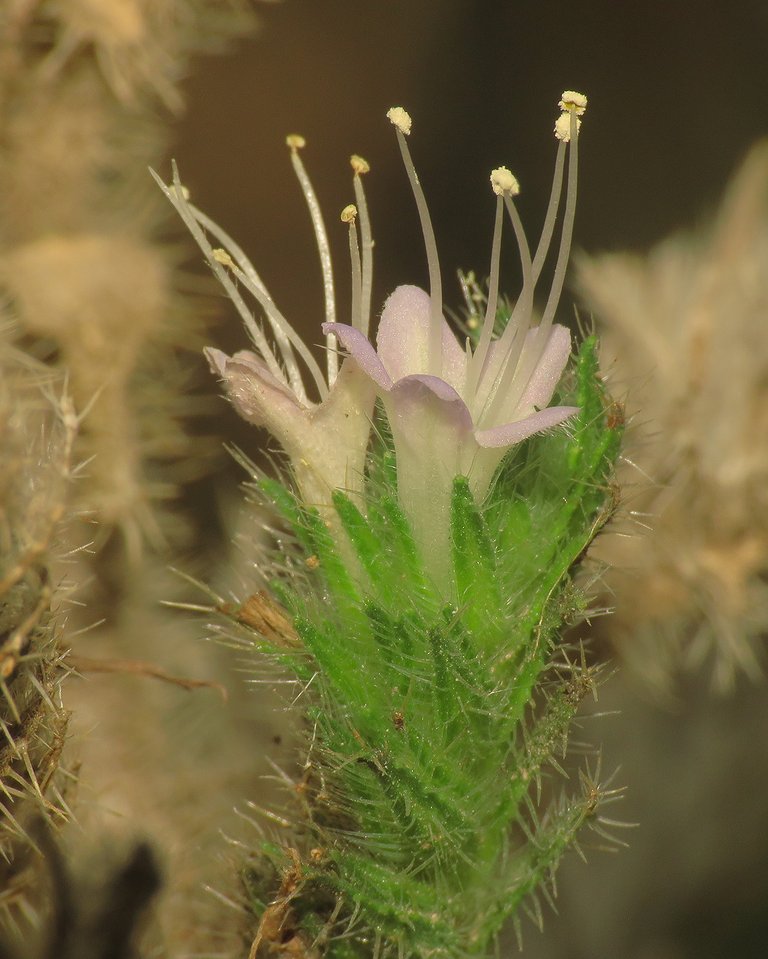

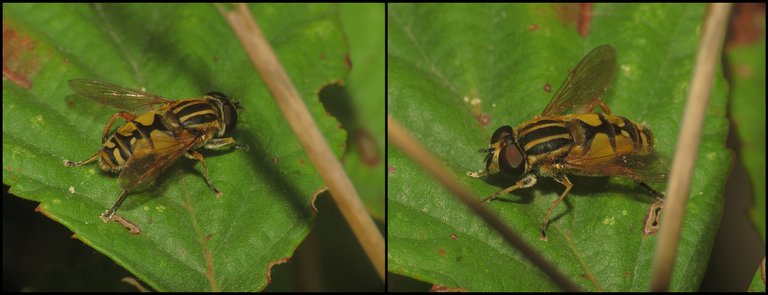

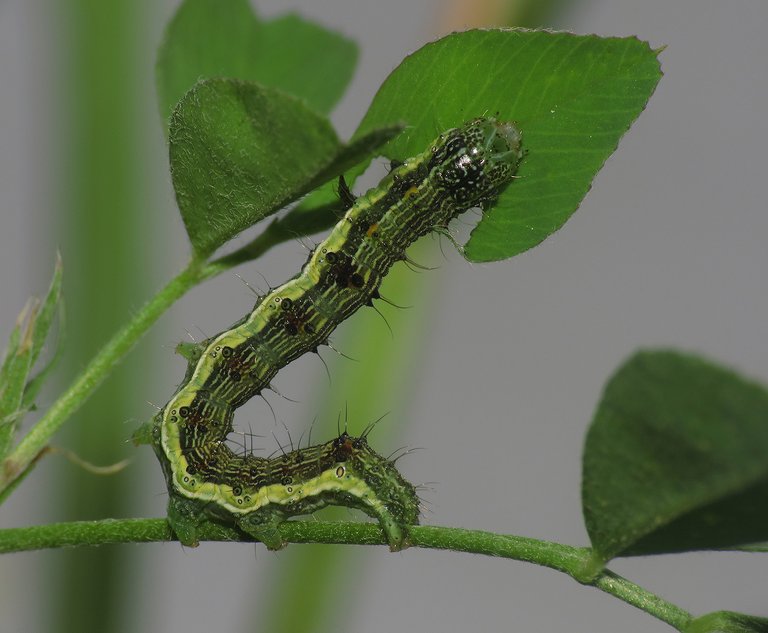
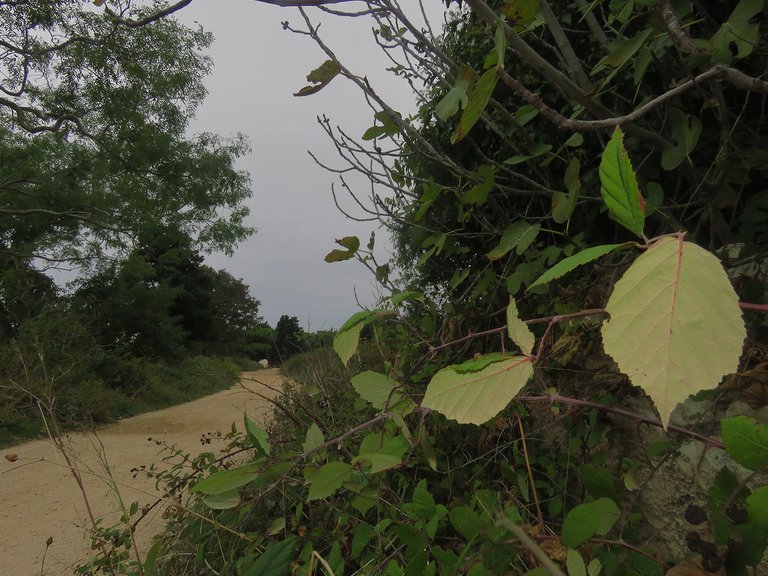
A great selection of photos. I really liked the caterpillar 😍, it looks like a real little fairy with its green colors
🙂
Lovely shots. I'm wondering if some of the insects are getting on your skin when taking pictures. Hehe
Sometimes. 😃 Yes, sometimes they do. 🦋🐝🦋🐞🕷️🦋🐝🕷️🪳 Insects, and spiders too.
https://twitter.com/LovingGirlHive/status/1731284815541137669
Your Nature photos are always fascinating and so beautiful ~ Well done Borjan for all your hard work !ALIVE !VSC 👌 Enjoy your day! 😎
@fun.farms has sent VSC to @borjan
This post was rewarded with 0.1 VSC to support your work.
Join our photography communityVisual Shots
Check here to view or trade VSC Tokens
Be part of our Curation Trail
@fun.farms ha enviado VSC a @borjan
Éste post fue recompensado con 0.1 VSC para apoyar tu trabajo.
Únete a nuestra comunidad de fotografía Visual Shots
Consulte aquí para ver o intercambiar VSC Tokens
Se parte de nuestro Trail de Curación
@borjan! You Are Alive so I just staked 0.1 $ALIVE to your account on behalf of @ fun.farms. (1/10)
The tip has been paid for by the We Are Alive Tribe through the earnings on @alive.chat, feel free to swing by our daily chat any time you want, plus you can win Hive Power (2x 50 HP) and Alive Power (2x 500 AP) delegations (4 weeks), and Ecency Points (4x 50 EP), in our chat every day.

🙂

Through which technique you captured such a tiny creatures.
Macro lens. I have a small macro lens to put on the camera. The flash of the camera helped me illuminate the spiders and insects on a gloomy, low-light, October day.
https://twitter.com/lee19389/status/1731292339715629182
#hive #posh
How are you dear friend @borjan good morning
I love this natural environment that you have visited, I must say that it is home to many species of insects
How great your macro shots, let us see all the details and characteristics of the insects that you will show us on this occasion. What a beautiful photograph of this plant “Echium italicum” and what a beautiful flower it has.
Thank you very much for sharing this beauty
Have a happy start to the week
Wonderful captures
La araña y el saltamontes, están muy originales..me encanta 😍.
Another breathtaking display of macro photography!... Applause!... My favorite has been that wonderful opilion!... Wow!... What a species and excellent photos!
!discovery 33
!VSC
!PIZZA
@jlinaresp has sent VSC to @borjan
This post was rewarded with 0.1 VSC to support your work.
Join our photography communityVisual Shots
Check here to view or trade VSC Tokens
Be part of our Curation Trail
@jlinaresp ha enviado VSC a @borjan
Éste post fue recompensado con 0.1 VSC para apoyar tu trabajo.
Únete a nuestra comunidad de fotografía Visual Shots
Consulte aquí para ver o intercambiar VSC Tokens
Se parte de nuestro Trail de Curación
Yes, the very long legs make him look somewhat impressive. 🙂

This post was shared and voted inside the discord by the curators team of discovery-it
Join our Community and follow our Curation Trail
Discovery-it is also a Witness, vote for us here
Delegate to us for passive income. Check our 80% fee-back Program
$PIZZA slices delivered:
@jlinaresp(5/10) tipped @borjan
https://reddit.com/r/blogs/comments/189v5v4/macro_october_in_marlera_episode_seventeen_29_of/
The rewards earned on this comment will go directly to the people( @jlinaresp ) sharing the post on Reddit as long as they are registered with @poshtoken. Sign up at https://hiveposh.com.
The efforts you are putting on your work is admirable.
You find an insect paradise that has a variety of beautiful insect species, the shots you share also look so beautiful
The hydiris ornatailis species look very good
It is beautiful
Absolutely fascinating, the Syrphidae must be the Rolls Royce of flies.
The moth completely camouflaged!
Yes, and many of them, the Syrphids, mimic bees and wasps in many different, quite colorful ways. Very diverse and interesting bunch of flies. 🙂
First time I saw the hydriris ornatiles...and the echium plant is also intresting :-)
👍 ❤️ Upvoted ❤️ 👍
@borjan, You are most welcome.
And don't forget to support me back
Yep. I voted for your witness.
@borjan,
Thank you so much.
I'll keep up the good work.
Lol I love how you keep doing the whole Marlera intro🤣🤣
😂 It's like in Star Trek the old series... each episode must start with Space: the final frontier. These are the voyages of the Starship Enterprise. Its five-year mission: to explore strange new worlds ... and so on ...
https://twitter.com/jewellery_all/status/1731413474977190362
Seriously, it seems Marlera is surrounded with so many nature that I am beginning to think of visiting already. This photos are amazing, I love the caterpillar, it looks very unique
🙂 There are many insects and spiders but very few bigger animals.
Congratulations @borjan! You have completed the following achievement on the Hive blockchain And have been rewarded with New badge(s)
You can view your badges on your board and compare yourself to others in the Ranking
If you no longer want to receive notifications, reply to this comment with the word
STOPCheck out our last posts:
This is very nice
The photos are really dope and truly amazing I must confess
Seriously i enjoyed seeing all these stuffs, so natural and fascinating!